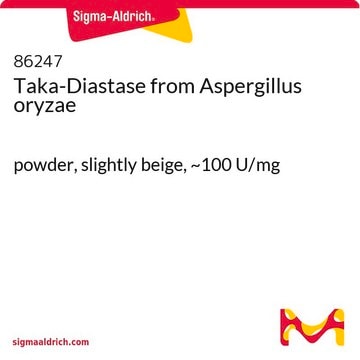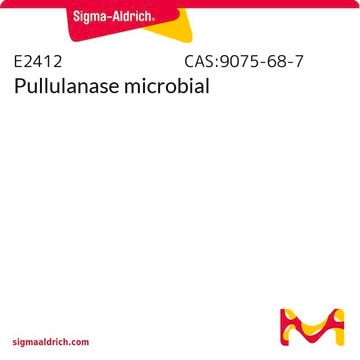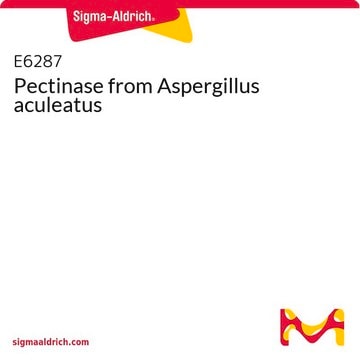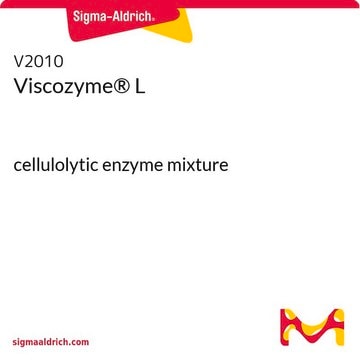42395
Tannase from Aspergillus ficuum
powder, white, ≥150 U/g
Synonyme(s) :
Tannin acyl Hydrolase
About This Item
Produits recommandés
Source biologique
Aspergillus sp. (A. ficuum)
Forme
powder
Activité spécifique
≥150 U/g
Impuretés
25 mM potassium phosphate
250 mM NaCl
50% glycerol
Couleur
white
Température de stockage
2-8°C
Catégories apparentées
Description générale
Application
- as a standard to determine the tannase activity of bacterial isolates
- to study its effects on the inhibitory activity of tannic acid on biofilm formation
- to obtain Proanthocyanidins (PA) by enzymatic hydrolysis of grape skin and seeds
Actions biochimiques/physiologiques
Définition de l'unité
Mention d'avertissement
Danger
Mentions de danger
Conseils de prudence
Classification des risques
Resp. Sens. 1
Code de la classe de stockage
11 - Combustible Solids
Classe de danger pour l'eau (WGK)
WGK 1
Point d'éclair (°F)
Not applicable
Point d'éclair (°C)
Not applicable
Équipement de protection individuelle
dust mask type N95 (US), Eyeshields, Faceshields, Gloves
Certificats d'analyse (COA)
Recherchez un Certificats d'analyse (COA) en saisissant le numéro de lot du produit. Les numéros de lot figurent sur l'étiquette du produit après les mots "Lot" ou "Batch".
Déjà en possession de ce produit ?
Retrouvez la documentation relative aux produits que vous avez récemment achetés dans la Bibliothèque de documents.
Les clients ont également consulté
Notre équipe de scientifiques dispose d'une expérience dans tous les secteurs de la recherche, notamment en sciences de la vie, science des matériaux, synthèse chimique, chromatographie, analyse et dans de nombreux autres domaines..
Contacter notre Service technique












